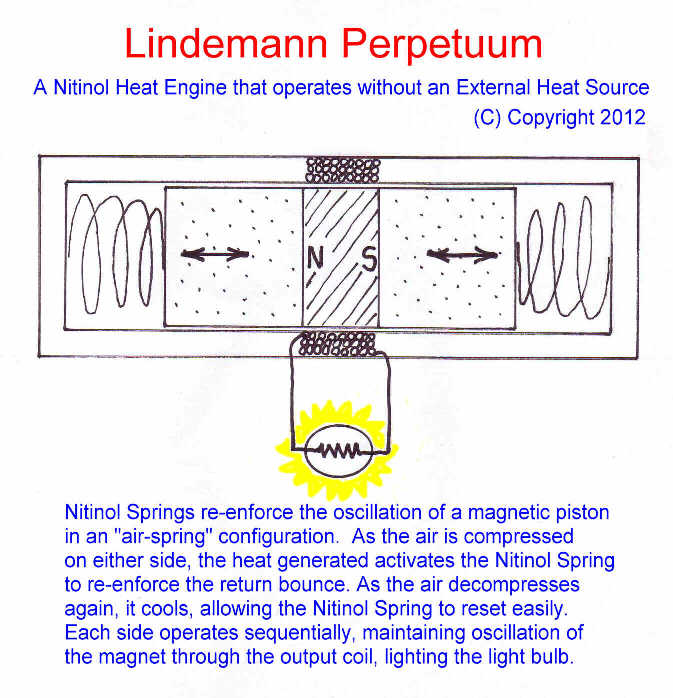I've been pondering the possibility of using pressure-based temperature changes (was it called adiabatic heating?) to cause Nitinol transition and harvest the extra force.
We only need a 30-70degF temperature change, which seems doable with fairly small pressure changes (20-50psi).
So, on input, we'd have 50psi on a piston, but on output we have 50psi plus the nitinol's spring force.
Forgive my horrible drawing, but hopefully you all get the concept. It has a ton of potential variations too (like a rotary actuator that is triggered by air but powered by nitinol).
Anyone else ever attempt this or have any thoughts on it?
We only need a 30-70degF temperature change, which seems doable with fairly small pressure changes (20-50psi).
So, on input, we'd have 50psi on a piston, but on output we have 50psi plus the nitinol's spring force.
Forgive my horrible drawing, but hopefully you all get the concept. It has a ton of potential variations too (like a rotary actuator that is triggered by air but powered by nitinol).
Anyone else ever attempt this or have any thoughts on it?

 (pressure change resulting in 'free-ish' temperature changes)
(pressure change resulting in 'free-ish' temperature changes) 
Comment